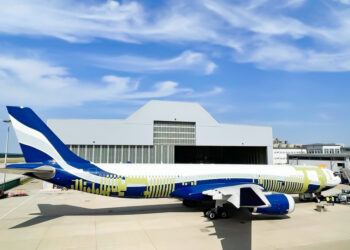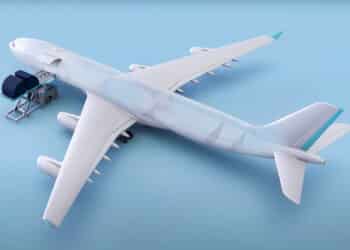No products in the cart.
ATSG’s new pipeline for 767 feedstock
Yesterday, when Ohio-based Air Transport Services Group, Inc. (ATSG) made the surprise announcement that it would be acquiring Oklahoma-based Omni Air, entry into the 777 operating platform stood out as the most interesting opportunity for ATSG – particularly at a time when some of the company’s current CMI clients, like DHL Express, are poised to add the fleet type. While the Omni deal could certainly pave the way for eventual 777F operations by ATSG’s subsidiary carriers, the deal also provides an immediate source of feedstock for the backbone of ATSG’s operations – the 767.
In recent years, securing suitable 767-300ER feedstock for conversion into freighter configuration has become increasingly difficult as demand for the freighter variant of the aircraft has outstripped the supply of outgoing passenger 767s. Amazon’s foray into dedicated freighter operations with 40 767Fs operated by ATSG and Atlas Air was indeed a contributor to a tighter feedstock supply, but not the only one. Chinese express carrier, SF Express – a relative newcomer to 767 operations – has developed an appetite for 767 conversions, and several carriers long familiar with the type, such as Cargojet continue to be a source of demand.
Although different carriers define “ideal” feedstock based on the intended mission of the freighter, a quick analysis of recently redelivered 767Fs illustrates a few trends:
- Most 767Fs being converted today are between 25-26 years of age. Seven of the last ten 767Fs redelivered were from a 1992/1993 vintage.
- Integrators and combination carriers are more inclined to convert younger aircraft. UPS recently took redelivery of an ex-Japan Airlines 767-300BCF that was originally delivered to Japan Airlines in 2003. Similarly, SF Express has a 2006 vintage 767-300ER in conversion with Boeing. LATAM Airlines, an operator of 767s in both passenger and freighter configuration, is also converting a 2006 vintage 767 to freighter configuration.
Since ACMI providers like Atlas and ATSG currently represent the largest sources of demand for 767s, we can generalize that the “sweet spot” for 767 conversions is around 25 years of age.
Even though there are an estimated 27 parked 767-300ERs under age 27, and hundreds of active -300ERs under age 27, securing an aircraft at the right age and price is somewhat of an art. After all, many carriers dispose of young passenger aircraft – with years of viable life in passenger service remaining – while other carriers utilize their assets to a point at which scrapping the aircraft is the only aftermarket option.
Returning to ATSG’s Omni acquisition, a number of 767-300ERs in Omni’s passenger fleet will be suitable for conversion over the next few years. Of the seven aircraft owned by Omni’s leasing affiliate, four aircraft are over age 22, with the oldest being a 1993 vintage aircraft. Apart from immediate access to feedstock, ATSG now has a wider range of options when it’s in the market for 767s. During a call to discuss the acquisition, ATSG’s COO, Rich Corrado, told investors that newer aircraft often become available that are at an age that doesn’t fit ATSGs price profile. With Omni’s passenger operations, however, such an airline can “use an aircraft for a few years, and then it becomes feedstock.” Atlas Air has a similar dynamic on a smaller scale, with a passenger fleet that includes three 767-300ERs, three 747-400s and a 767-200, some of which are operated on behalf of the United States Air Force.
Those interested in learning more about 767F and 777F operations are invited to join us 10-12 October at Cargo Facts Symposium, where ATSG’s Rich Corrado and Mike Berger will join roundtable panel discussions on air freight trends and e-commerce. For more information, or to register, visit www.cargofactssymposium.com.




